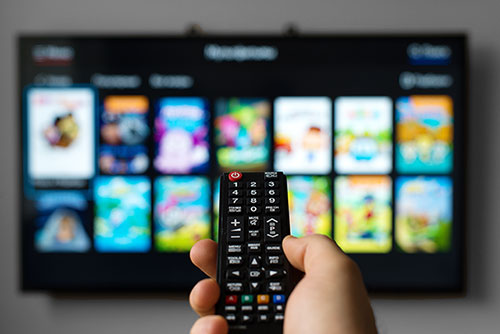OTT stands for Over the Top. It was originally a term that refers to devices that are “over” a cable box in order to provide access to TV content. OTT platforms deliver content via the internet, not through a cable/broadcast provider.
What is OTT? Definitions of OTT devices, content, and video
Although they may be connected, Over the Top and Video are not the exact same thing. OTT services are a new channel by which video content and related display or advertisement are delivered to end-users.
- Video: You can view online video content on any device including smartphones, tablets, TVs, and other over-the-top devices.
- OTT content is content that comes from an OTT platform. This includes video streaming services like PirloTV. OTT content is available on multiple devices including mobile devices and computers.
- OTT devices: Any device that can be used to consume OTT content, but it isn’t a desktop, laptop, or mobile. Smart TVs and Apple TVs are some examples.
The various partners involved in delivery, advertising, or measurement streams may define “Over the Top” differently. OTT is defined as such by OTT content providers (e.g. Hulu, SlingTV, etc.). Any user who accesses over-the-top content from any device (desktop or mobile phone/tablet), can be considered OTT. ).
However, OTT can also be defined according to the device that accesses the content. Over-the-top devices are Roku, Chromecast, and Amazon Fire TV, as well as Smart TVs (Connected TVs), and gaming platforms (i.e. PlayStation, Xbox, etc.). The partners in each OTT supply chain determine how advertising inventory is classified and measured.
“The majority of OTT advertising is video, but display advertising also appears on over-the-top channels and devices.”
OTT definitions include:
- Video viewers who are OTT (over-the-top): These individuals can access the video through an app or website that offers streaming video content. This bypasses traditional distribution. Freeflix and Hulu are some examples.
- CTV/IPTV users are those who connect to the internet via Smart TV or other devices such as set-top boxes (STB), Apple TV, Google Chromecasts, Amazon Fire, Roku, Blu-ray players, or gaming consoles.
- Linear OTT video service subscribers: Subscribers to a service that delivers live TV channels over the internet for a monthly fee. Sling TV and DirecTV Now are examples of linear OTT platforms.
The following are common sub-categories for OTT/CTV users:
- Advertising-based video-on-demand (AVOD). Users have access to free content that is then monetized via video advertising.
- Subscribe to video-on-demand (SVOD), or Subscription OTT: Subscription users who pay for subscription access to streaming video content.
Transactional-based video-on-demand (TVOD), users who pay to access specific content via a pay-per-view (PPV) purchase model.
This video will show you the latest trends in OTT/CTV.
Read about: Latest OTT platform
FAQ
What does OTT stand for?
OTT stands for “over-the-top”. This term refers to the delivery of TV and film content via devices that connect both the Internet and the television.
Over-The-Top means that OTT devices must “over” cable boxes to provide access to TV content.
How do I get OTT connections?
OTT streaming requires a compatible hardware device, in addition to an Internet connection. These devices include:
- There are OTT Apps available for mobile devices, smartphones, and tablets for streaming on the go.
- Personal Computers (PCs), web browsers, or desktop-based apps
- Connected devices – Examples include Apple TV, PlayStation 2, Xbox, FireStick and Xbox.
- Smart TVs – Web-enabled TVs made by manufacturers like LG, Samsung, or Sony
Also read: What is display resolution?
